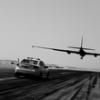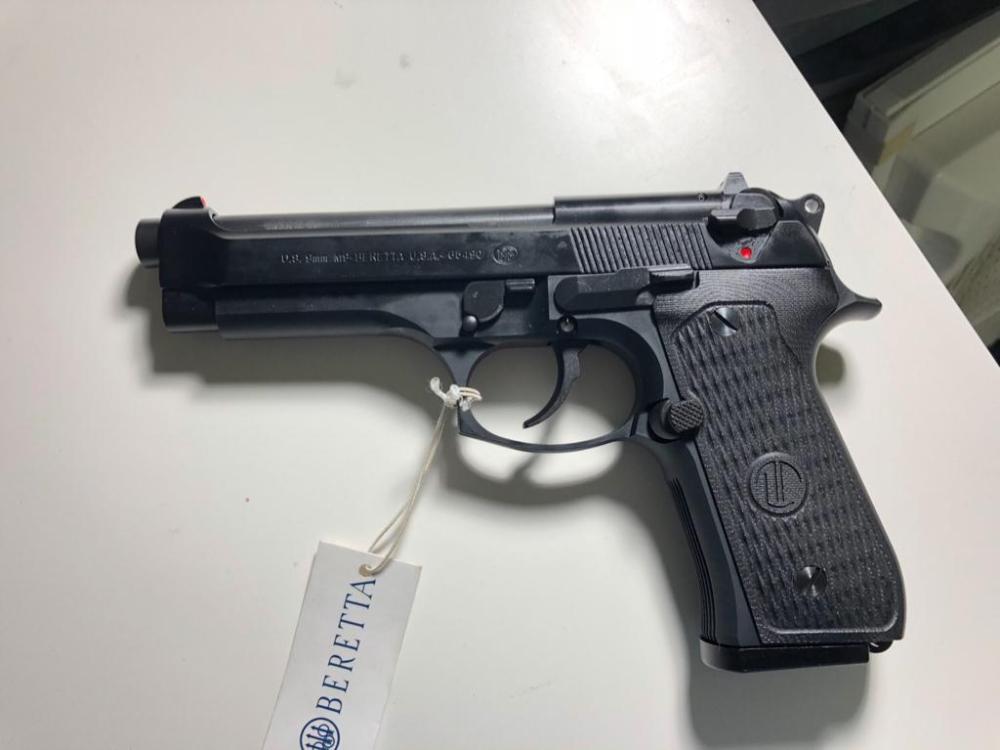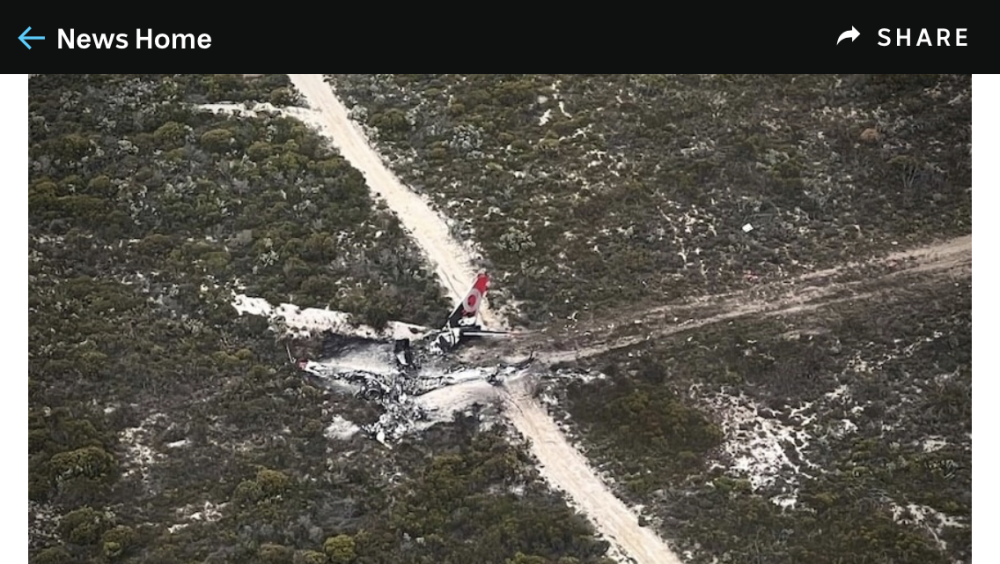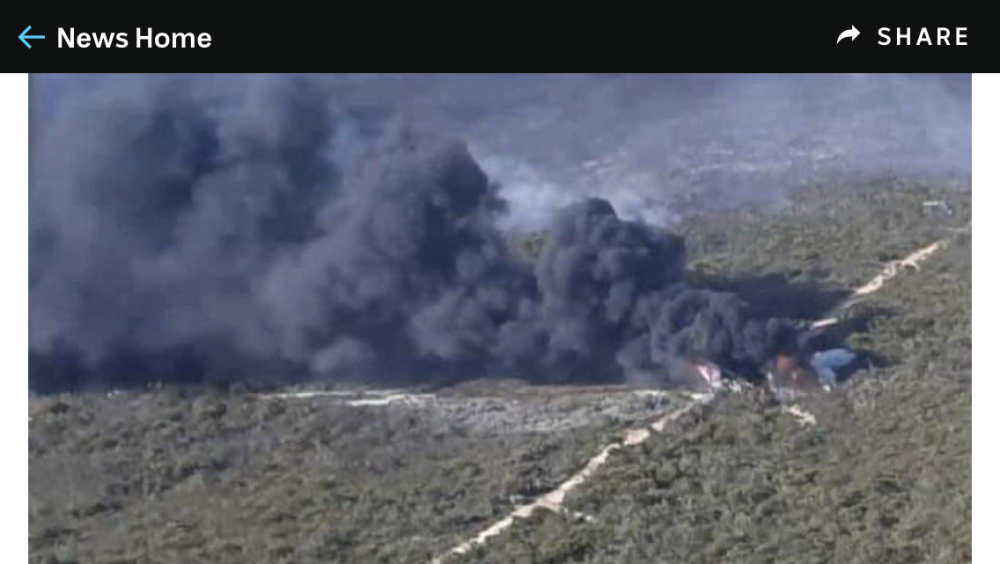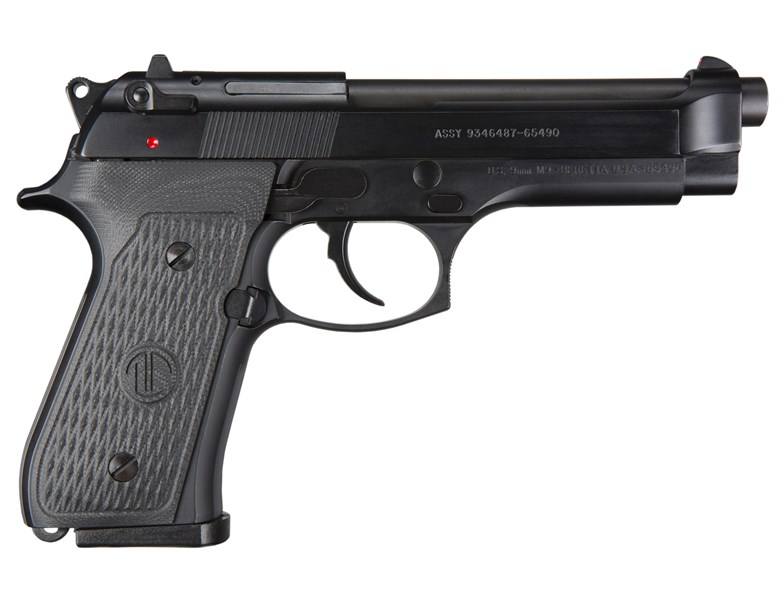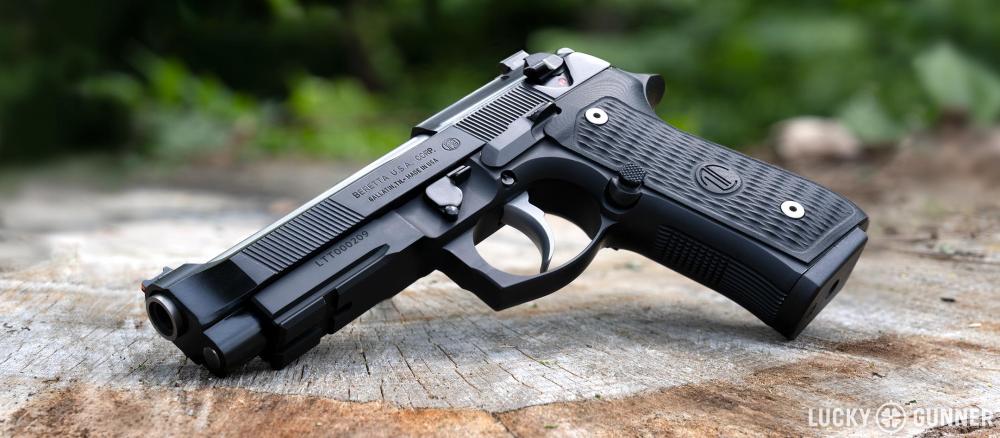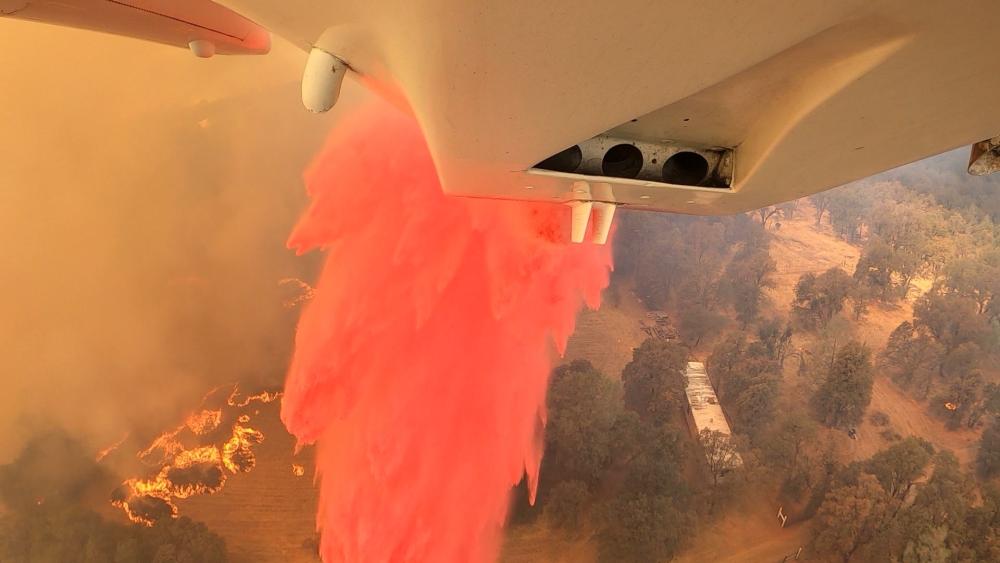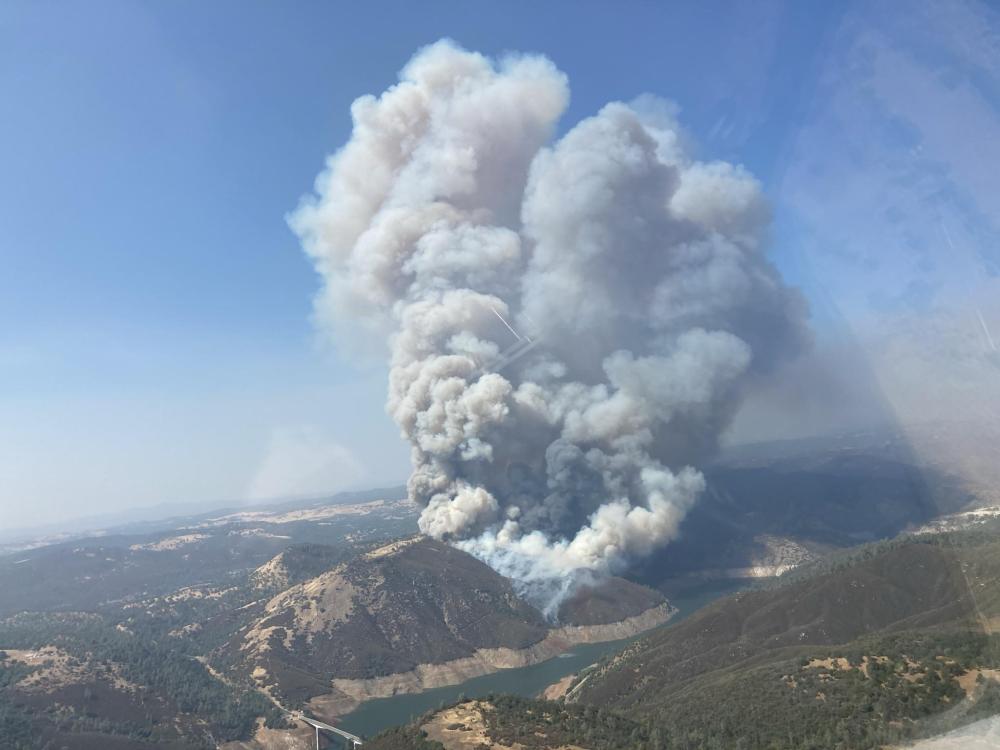-
Posts
95 -
Joined
-
Last visited
-
Days Won
3
Content Type
Profiles
Forums
Gallery
Blogs
Downloads
Wiki
Everything posted by Shaft34
-
Thanks for asking Dirk. My base is closed for the season with the aircraft in annual maintenance, so I'm not down there now. They did staff some additional tankers to help the next couple of weeks, but some family obligations are keeping me at home. Most of our pilots are off for the season, so I don't think they'll have a problem finding enough to fill in. Wish I could. It looked pretty raunchy with those winds, the Santa Ana's aren't that fun to fly in when they are ripping. Very tragic fires!
-
I had two Hellcats and traded one in last year on a 365X and plan to do the same with the other one soon. Both the Hellcats shot well and were reliable, no malfunctions that I can remember. My issues with them are mostly nit picks and personal preference. The first, and most annoying to me is the placement of the slide released lever, it’s too far back for my grip and the slide would almost never lock back when empty unless I consciously focused on loosening my right thumb a bit. I don’t have this issue with the 365X. Second, I don’t like the U Notch rear sight. It works, just not my preference. I’m faster and more accurate with the standard 365X sights. My previous carry was a Ruger LC9S Pro and both these guns are leaps and bounds better, so it’s really down to personal preferences. My main full size 9s are P320 Carry’s, so I appreciate the similarities across the Sigs. Planning to get a 365 Macro at some point too.
-
I find it super hard to believe they got shrapnel off those steel targets at 15’ with a 5.56! I mean, who would’ve thought? 🙄
-
Never cared for the issued M9 during my time in. Much preferred my polymer 9s at the time (mostly SA XD or XDm). I ended up buying a new M9A3 about 6-9 years ago kind of on a whim. That gun completely changed my mind about the Beretta 92 in general. Straight Vertec grip, thinner grip panels, smoother trigger with lower weight hammer spring, extended mag release, dovetailed sights for more options, and the "G" version safety/decocker lever. Next 92 I got was a Langdon Tactical (LTT) modified M9 with most of those same improvements and then eventually my favorite version which is the LTT Elite 92. Night and day difference with a standard M9. Not going to argue it's the best pistol ever or should replace your favorite service or carry pistol, but it can be a damn good gun with the right upgrades. A lot of Beretta's more recent versions, such as the 92X, come standard with some of these upgrades. A few upgrades I'd recommend to make that M9 more enjoyable to shoot, similar to this Beretta Langdon M9 version that is no longer available, but provides good ideas to transform that M9 into a much better pistol: Beretta Langdon M9 9mm 15+1 Limited | SPEC0638A | 4.9" Barrel, 15+1 Rounds - Buds Gun Shop 1) LTT Ultra Thin VZ G10 grips or similar (helps with trigger reach and mag release use) VZ G10 Ultra-Thin LTT Grips - Langdon Tactical 2) 13 or 14 lb Chrome Silicon Hammer Spring from LTT (standard M9 is a 20# spring for example) Chrome Silicon Hammer Spring (12#, 13#, 14#, 16#) - Langdon Tactical 3) Beretta "G" Lever Safety/Decocker (The lever is spring loaded to return to the up, fire, position. No safety essentially, but allows the hammer to be decocked and treat it like a DA revolver) Beretta 92 G Model Conversion Kit - Langdon Tactical 4) Extended mag release 92 Oversized Steel Mag Button - Langdon Tactical For a bit more $$$ 5) LTT Trigger Job in a bag (it's about $180, but worth it) Trigger Job in a Bag - 92/96/M9 Series - Langdon Tactical The only pistols I shoot regularly these days are the 92s or Sig P320 Carry.
-
Coulson 737 Fireliner crashed in Western Australia yesterday during ops on a fire. Miraculously, both pilots survived with minor injuries. I know one of the pilots from being around the industry the past several years, so I’m especially glad it turned out this way, all things considered. https://www.abc.net.au/news/2023-02-07/wa-boeing-737-plane-crash/101939554
-
Not that I’m privy to or have heard about. It might be a topic with the higher up management, but they are pretty invested in the S-2 at this time. The 7 C-130s will supplement the S-2s once they get tanked. The S-2 fills a rather unique roll and I’m not sure if there is a comparable airframe out there. Either smaller and slower like a SEAT, or larger with a bigger footprint (2 crew, etc) like a Dash 8. Several of our bases are tight space wise and have short (4,000’) runways with DA issues.
-
I’ve become a real Beretta 92 fan over the past 5 years, but not in the classic factory configuration. My current favorite handgun is the 92 Elite LTT model with a trigger job. Essentially a M9A1 model with some key mods that make it awesome, but it probably won’t fill your desire for nostalgia if that’s your goal. I would recommend a few mods for any M9 to make it a much more pleasant shooting experience. LTT (Langdon Tactical) teamed with Beretta about five years ago to release a limited edition M9 LTT. This was a stock M9 commercial model with the following improvements: Florescent Orange Front Sight Dot Blacked out rear sight "G" Levers(De-cock only) "D" hammer spring(lighter trigger) LTT Exclusive slim VZ grips Steel trigger Oversize Mag Catch In addition, I’d add the LTT trigger job in a bag to the list of upgrades. These all turn a standard M9 into a much more enjoyable shooter without significantly changing the look of the pistol (pic attached). Just something to think about before buying a pistol you don’t really like and might not shoot much. It really changed my view of the 92. Link to the 92 Elite LTT https://langdontactical.com/92-elite-ltt-full-size/
-
Something to distract from the political discussions… https://fireaviation.com/2022/08/28/cal-fire-attaches-video-camera-to-air-tanker/ Mounted a GoPro to the bottom of my tanker this week and got a little fire yesterday to test it out. Just a short clip, but captures the essence of our Initial Attack mission here at CalFire. Direct and timely action to save structures and possibly lives!
-
They are definitely a big player in the industry and seem to be making a lot of moves in both fixed wing and rotary wing areas. The main large air tanker companies in no particular order are Coulson (C-130 & 737), Neptune (BAE-146), AeroFlite (RJ-85 & Scoopers), Erickson (MD-87), Bridger (Scoopers), and 10 Tanker (DC-10). There is also Airstrike with the P-3s and AirSpray possibly with a BAE 146, but both were in active this past season and I don't know their future status. Honestly, I'm a bit pigeon holed in my small CalFire world, so don't feel especially qualified to talk about the specifics of the other tanker outfits. Work with them on fires and meet people at bases during a big fire, but don't really have too much interaction outside of that. I've met several former mil pilots working in the industry and some might be lurking here, so they would be a better resource for specifics.
-
The CFPA has an Instagram account with some great pics and videos... CFPA (@californiafirepilotsassoc) • Instagram photos and videos
-
It varies from 10 min turns to up to an hour or more depending on how far the incident is from the nearest base. In the S-2, the basic pilot math is 1/3 the distance in minutes each way, so 30 miles away is 10 min or about 25 min turns including ground time. For state incidents, it's usually no more than 30 min due to the location of our bases, but for federal incidents the times can go way up if they are remote. Especially anything on the east side of the Sierras (i.e. Owens Valley) since we have to cross the Sierras for each trip. We had a couple fast moving fires within 5 miles of the base this year where it was straight up 10 min turn arounds including the 3 minutes to load. Think I did 19 drops in about 3.5 on the Hobbs. We had five S-2s on the first fire and pounded the shit out of it that afternoon. Next day, same thing on the second fire. Kept them both to reasonable size and they were done by the morning. We prefer to keep them under 10 acres, but sometimes that's just not in the cards, so beating them in one day with minimal structure loss is a win too. Now, the Scooper aircraft that use lakes can have extremely short turns if there's a useable water body nearby. But that's another subject... This pic is the first fire after only 20-25 minutes after initial report...explosive to say the least. Terrain and up canyon winds were fueling it. We held it on the ridge to the left and stopped it in the small valley center-right of the pic. View is basically from downwind leg at the airport. It's a fun and rewarding job when you get to make an impact and see results!
- 64 replies
-
- 10
-

-

-
It’s never too early to start. There are several different options for work in the industry, such as being a Fed Lead Plane or Smokejumper pilot, Large Air Tanker companies, SEATs, and Air Attack. Flying for CalFire is just one part of this industry and honestly doesn’t work for everyone. When I retired early (15 years) I worked for a Pt 135 company flying Air Attack and charter for 3 years before I got on with CalFire. I learned a lot during those 3 years doing Air Attack about where I wanted to be long term.
-
Our maintainers at McClellan do a thorough inspection of the aircraft during the off season. Recently the state has installed a load monitoring sensor kit which should help find any issues early. I believe the Fed Contract tankers have been mandated to have a similar system for a number of years since the two wing failure incidents in 2002. I'm not sure of the specifics though. The state operated S-2s have the advantage of being designed from the start to operate entirely in the low altitude and carrier environment, so they are massively overbuilt. Also, The E and G models we fly now were all built in the '62 to '67 period and usually served only 5 years or so operationally before being parked at DM. That being said, they have been in use as air tankers for about 20 years now, so there are issues that pop up, but the state has been good about tackling those issues as they arise since they value the capability the S-2 brings in their model of wildland fire fighting. The S-2 has been the backbone of Californias tanker fleet since the mid 1970s, first with the radial S-2As and now with the converted turbine S-2Ts. Prior to that the mainstay was the TBM Avenger and a mix of Fed large tankers (DC-4, C-119, B-17, PB4Y, etc)
-
The California Fire Pilots Association (CFPA) has created an updated website with much more information than previously available. Some of which is the path to a career in fire aviation. Here is a link to the careers page: Careers | California Fire Pilots Association (calfirepilots.com) Also, this season a couple of our pilots participated in an episode of the Pilot to Pilot podcast. There is a wealth of knowledge for anyone interested in the topic. CalFire- Fighting Wild Fires by Air by Pilot to Pilot - Aviation Podcast (anchor.fm) Here's a badass photo of my fellow Columbia Air Attack Base tanker pilot Ken, saving some structures near Clear Lake last summer...
- 64 replies
-
- 12
-

-
I forgot to mention the TruGlo TFX or TFO sights. These are fiber optic with tritium inserts. I have the TFOs on a couple pistols (green/yellow) and like them. The TFXs are improved TFOs and available for more models.
-
Target or Action shooting: Dawson Precision fiber optic front w/ serrated black rear Defensive shooting: Ameriglo Hackathorn or Spartan, Trijicon HDXR, or a fiber optic like above if you have a light mounted I’ve found I prefer a square notch rear, so I like the Ameriglos. The Trijicons have a u notch rear and are great sights. Might depend on what’s available for your particular handgun.
-
I really like shooting my SBRs in 5.56 and 300 AAC with suppressors. Still wear earpro, but eliminates the concussion. It is more complicated to get the correct barrel length and gas port size lined out. Subsonic 300 AAC or 9mm in an AR is awesome! If you’re doing shooting on private property with neighbors, I’d say it would be a good idea. Definitely reduces your noise signature. Even for super sonic rounds. Start with a rimfire and a multi use center fire, like an Omega 300 or Hybrid 46. Unless you want a pistol can, which I’d recommend something light and short. A .22 pistol is a blast to shoot suppressed. A 9mm with a 7”+ can is fun, but really changes the handling characteristics and isn’t practical for carrying.
-
This should get you started... https://wiki.calgunsfoundation.org/index.php?title=Moving_to_California_with_firearms I found Calguns.net to be very informative when I got stationed at Beale in ‘09. Things have changed quite a bit since I left though, so I don’t have current info to advise on.
-
This picture was posted on the Fire Bombers group on facebook and I thought it really captures the essence of aerial firefighting in general, and what we focus on at CalFire in particular. Initial Attack to support the aggressive response by the ground firefighters, who do the real work and actually put out the fires. This photo was taken 40+ years ago and some things have changed, but the mission remains the same. Just thought I'd share it here...
-
Huggy...that is right about when AFPC told me they wouldn't release me from fighters the first time. Took a few extra months, but you guys made it happen. Definitely a great program if it's the right fit! Hail Dragons!
-
I could write a short book on this, but I’ll try to sum it up. Essentially, this job is for pilots who have a passion for the mission and type of flying we do. There is a long history of poor pay and working conditions in this industry, which have improved dramatically over the past 20 years, but will probably never reach the level of airline jobs. It’s not for everyone, but it is a great job if you love fighting fire! The seasons are getting longer and our pilot group (CFPA) has been working hard to remedy the schedule and pay issues. We are slowly implementing a new schedule that includes more days off....the 10 on/5 off. All of the OV-10 positions have switched this season and about half the S-2 bases will be on it. The S-2s will switch as more Tanker pilots are carded and available to cover the new positions. We have some C-130s slated to come online starting next year (2021), so I’m not sure how that might impact the schedule improvement for S-2s the next few years. The C-130 captains will be previously qual’d S-2 pilots for the most part. Pilot pay is essentially a day rate, plus some other benefits (401k, Pension, and BenCredit). OV-10 Pilots should make around $150k plus and Tanker pilots at $225k plus. Pay varies a lot due to the number of days you work, from about 125 to 200+. I think that hits on most of your questions...
-
Ok...now it makes a bit more sense. I have no direct experience with terrain following radar, so it’s hard to say. I do see tremendous value in a HUD of some sort that displays airspeed and AOA, which are pretty much all that I’m looking inside at on short final. A quality radar alt would be nice too! There could also be room for a good Synthetic Vision display in my opinion. Spent some time flying a King Air with G1000 and really liked their system. Basically a backup in case you enter thick drift smoke in tight terrain, not as a primary system.
-
I’m not exactly sure what you’re asking in reference to TFRs, but I’ll do my best to explain how we use them. There are two methods used to deconflict traffic around a Wildland Fire incident, the FTA (Fire Traffic Area) and the TFR. Easiest way to understand is that the FTA is for participating aircraft (I.e. assigned), while the TFR is used to keep non-participating aircraft out of the way. Generally, the Initial Attack (IA) phase will not have a TFR, just a FTA. As an incident moves into the Extended Attack (EA) phase a TFR will likely be initiated. This depends greatly on the particular AO of the incident. A fire in SoCal will get a TFR faster than one in the middle of nowhere usually. The TFR shape will morph as Fire activity dictates. The FTA was designed after a mid-air collision involving two S-2s in NorCal in 2001. This establishes a 5 mile ring around the incident and requires clearance in from the aerial supervision platform (if there is one). First call at 12nm from incident coordinates to receive clearance prior to 7nm, otherwise you hold out. First aircraft on scene make blind calls and are responsible for establishing the FTA. The stack starts at 2500’ AGL and moves down depending on aircraft type. It’s very well thought out and works great when everyone does their part. I’m not an expert on lead planes, but the main evolution I’ve seen in my seven seasons is the move towards making them all ASM (Aerial Supervision Module) platforms. Essentially, this is a Lead Plane with a specially trained ATGS (Air Tactical Group Supervisor, better known as Air Attack) sitting right seat to help with coordination. It’s been around a long time, but pretty much all of them are ASMs now. I believe it was the BLM that started that move, but I could be wrong. At CalFire, all our Lead Planes are ASMs and they use the OV-10. Most Fed leads use King Air 90s or 200s and the State of Alaska has a Commander 690 or two. The leads will be on scene for a few hours and really help on large incidents to increase the efficiency of operations by showing the tankers where to drop without a complicated “talk-on” from the Air Attack. Plus the Air Attack can get real busy talking to rotors and the ground, so it essentially splits the work. The lead will sometimes do a “show me” run for the Tanker to watch, then go for a live run with the Tanker in tow. In the S-2 we generally fly 1/4 mile in trail for the drop. The lead will mark the start/stop of the drop with smoke and make any wind corrections as required. As a Tanker pilot I’ll watch the smoke and correct off any extra drift if it’s different than expected. Some tankers require a lead plane in order to drop (VLATs and MAFFS). In the S-2 we usually get a “show me” and then fly our own drop pattern, but it really depends on how things are flowing and trying to be the most efficient we can. It also depends greatly on the individual pilot and what they like. I’ll take a lead if I’m unsure of the target or I’m already in a good position and we can get it done quickly. Most of the LATs (Large Air Tankers) seems to prefer a lead when one is available. It’s standard practice to order a lead for any Federal incident. For state incidents, we almost never order a lead until it goes big. Our standard order is an Ov-10 Air Attack, two S-2s, and a Helitack crew. It’s fast, efficient, and we generally catch them early doing this depending on fire conditions. Hope that answers your questions...
-
AOPA did a real nice segment on CalFire Aviation this week. It’s part of the linked video. Some good in cockpit video. https://aopalive.aopa.org/?utm_source=epilot&utm_medium=email Huggy...you’ll recognize the pilot.
-
In general, I would get away from thinking of the industry as a part-time or retirement gig, and more of a career to pursue. Sure, there are certain jobs available that fit that role, but they generally don’t pay much and are inconsistent year to year. If all you want is a little fun flying fire, then look to Air Attack jobs with any number of contractors in a 690 or King Air. The more serious, better paying jobs generally demand more dedication and time. You basically have Fed jobs (USFS & BLM), Fed contractors (Air Attack, SEAT, & Large Tankers), and State jobs (CalFire, etc). These may be year round or seasonal, but also full-time work. Its a small industry and I’ve found most opportunities are found through good old fashioned networking. That’s a tall order for a pilot coming off AD, believe me, I understand. Vets do have an advantage getting Fed jobs, so that is one way to get started. I flew a Fed Air Attack (contractor) for a few years before getting the chance to get on with CalFire (DynCorp). Met tons of people and got a good feel for the industry. The real challenge is the transition from a good paying job, to a path that may or may not work out for you. Especially with all the opportunity in the airlines right now. There is no standard path in this industry, everyone just kind of finds their way somehow. Usually hard work and sacrifice. Having a mil retirement helps ease that transition.


